This Homemade Seafood Stock is made using the shells of shellfish like crab, shrimp, or lobster. The broth is simmered with carrots, celery, and a bay leaf to use in bisques, soups, and more.
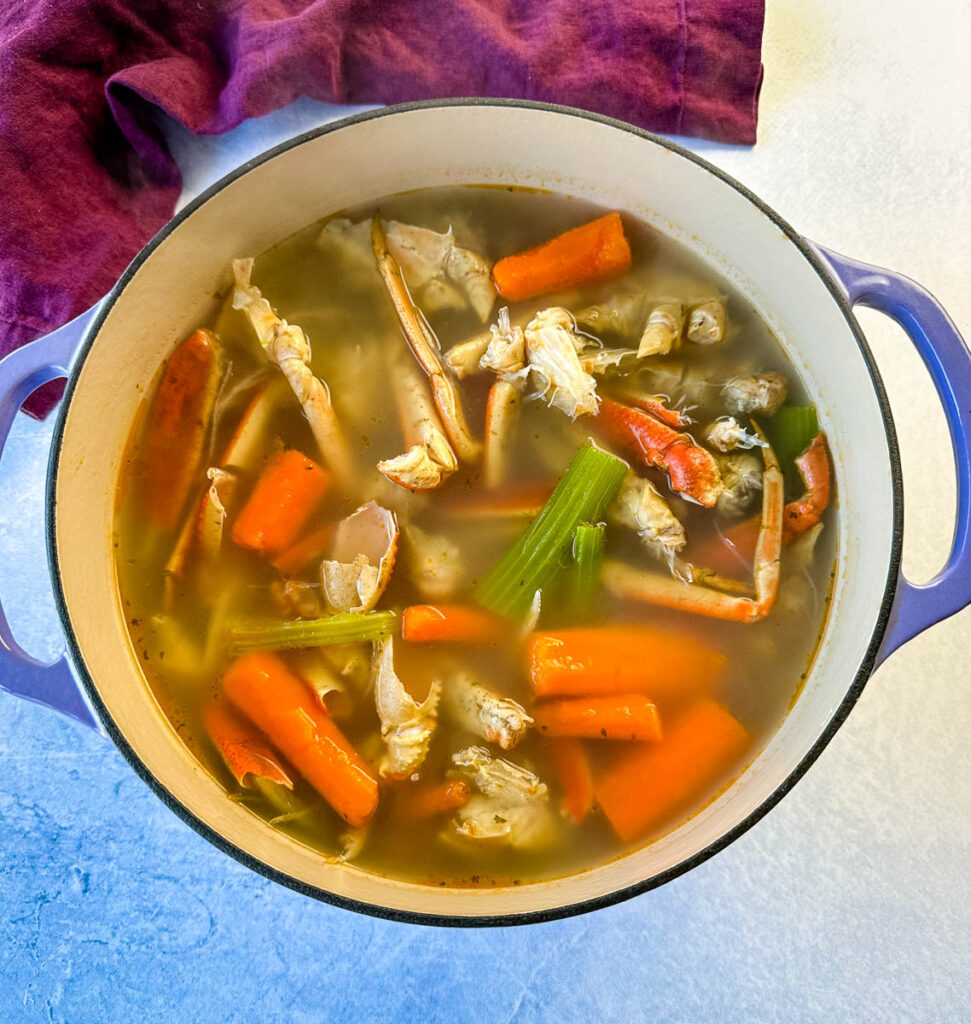
This post contains affiliate links. Please read my full disclosure here.
Finding seafood stock in grocery stores is difficult. And it never tastes like homemade. This recipe is the perfect cure.
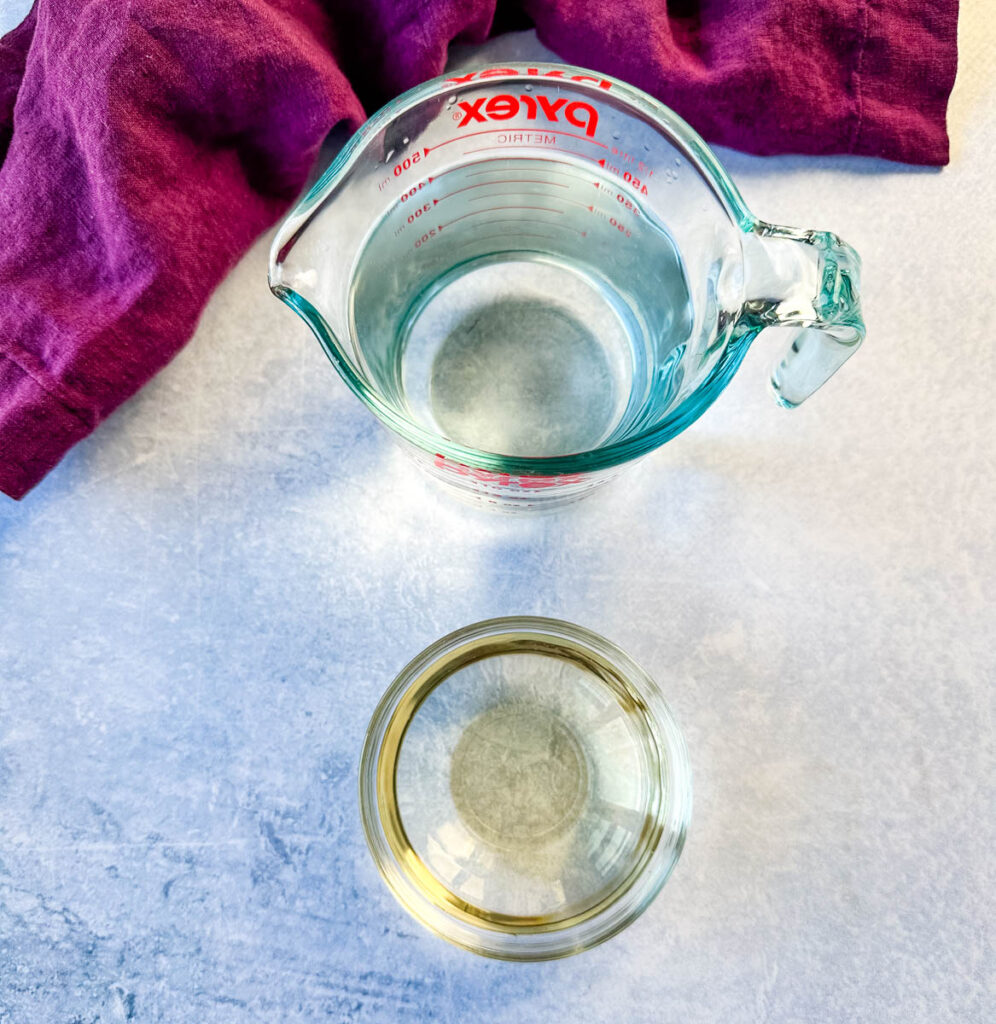
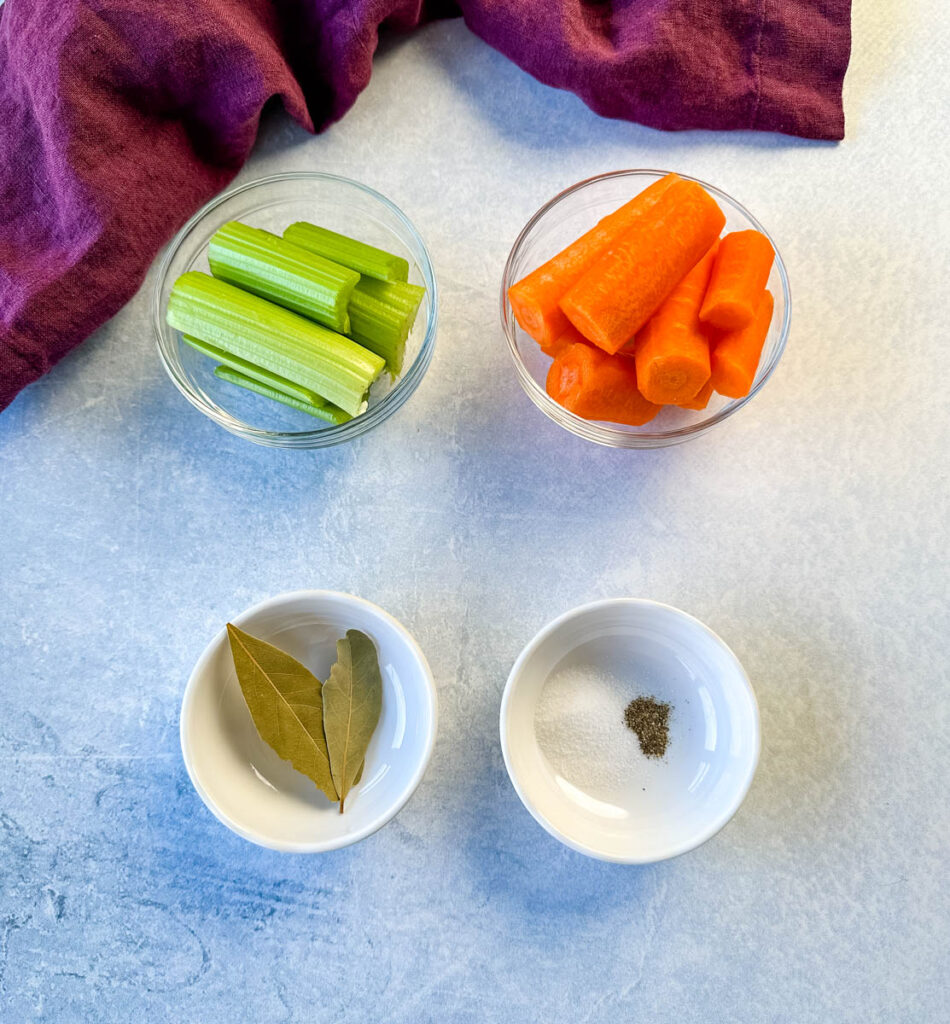
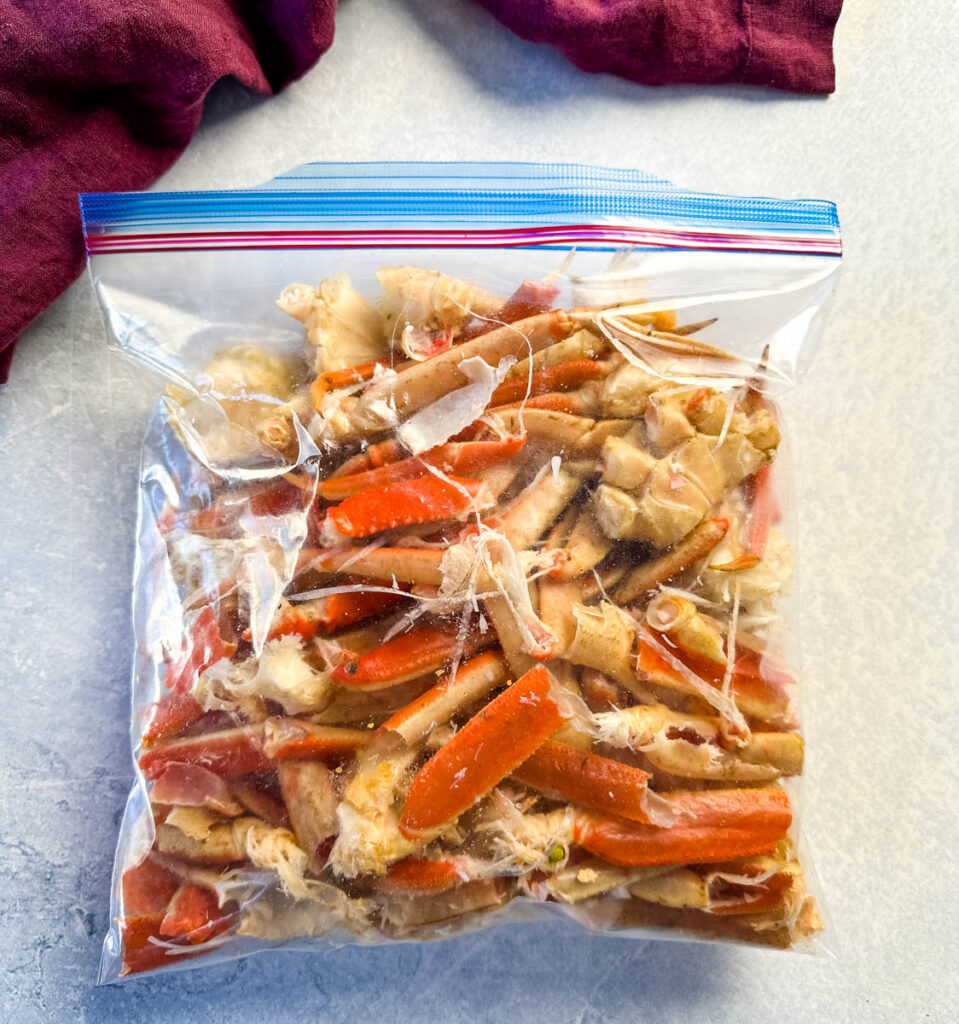
Spices
I don’t use a lot of spices in the broth because the recipe you’re going to add it to will be very well seasoned. You primarily want the broth to taste like seafood. I use salt and pepper, but feel free to add whatever you like.
How to Make Seafood Stock
Full detailed instructions are below in the recipe card.
- Add shells, water, carrots, celery, bay leaf, salt, and pepper to taste to a Dutch oven or soup pot on High heat.
- Once the water begins to boil, adjust the heat to medium-low and cover. Simmer.
- When the broth is finished, strain the broth using a mesh strainer or cheesecloth.
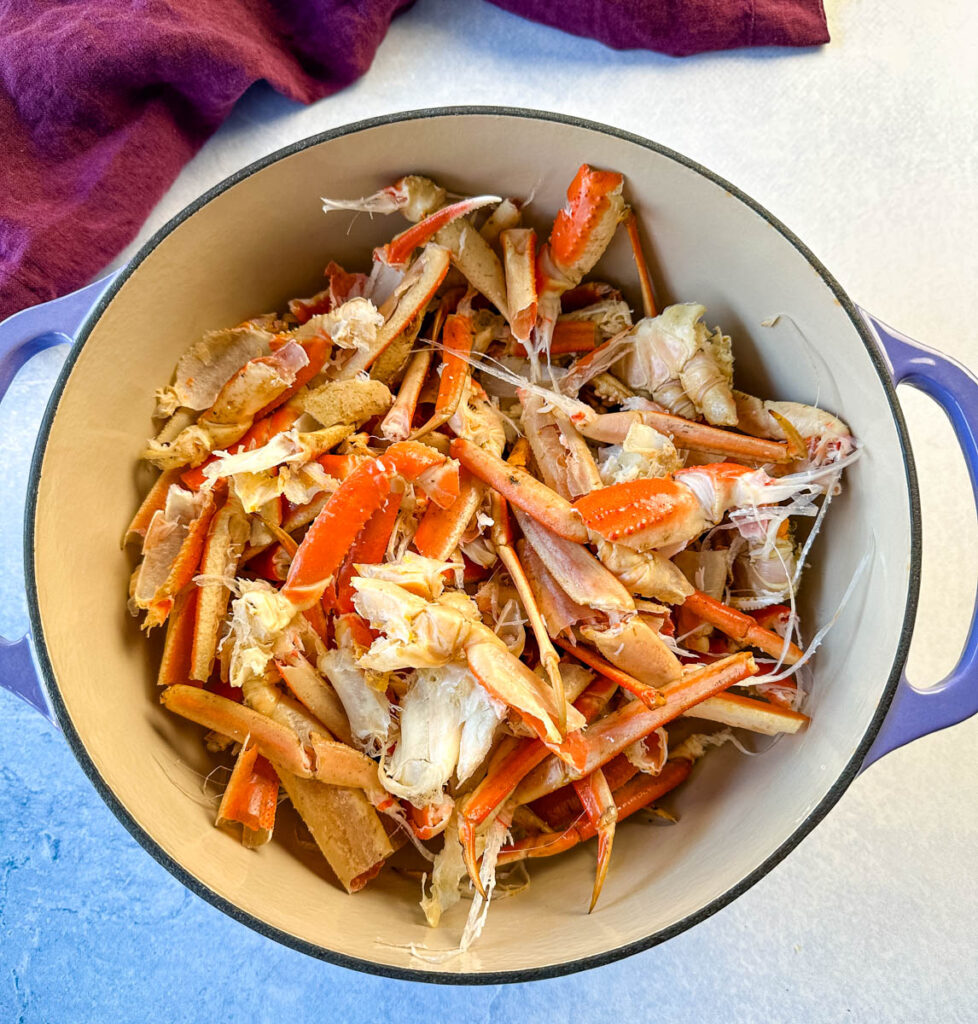
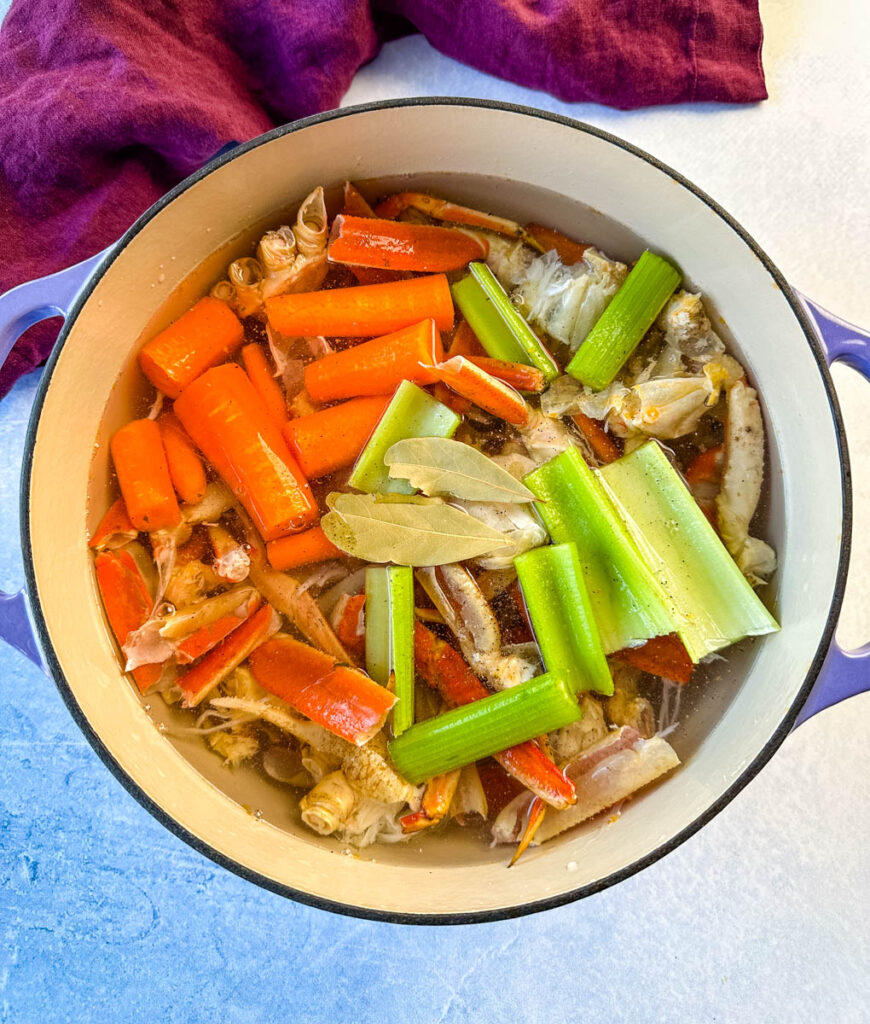
Cook Time/How Long to Cook
As with any stock, you typically want it to cook for an hour or two for maximum flavor. I find that at least 25 minutes of simmering provides great flavor. If you find your stock is bland after 25 minutes, then go ahead and allow it to cook until it reaches the flavor profile you are looking for.

Additional Substitutions and Add-Ins
- Onions
- Fresh Tyme
- Garlic
- Parsley
- Fresh Lemon
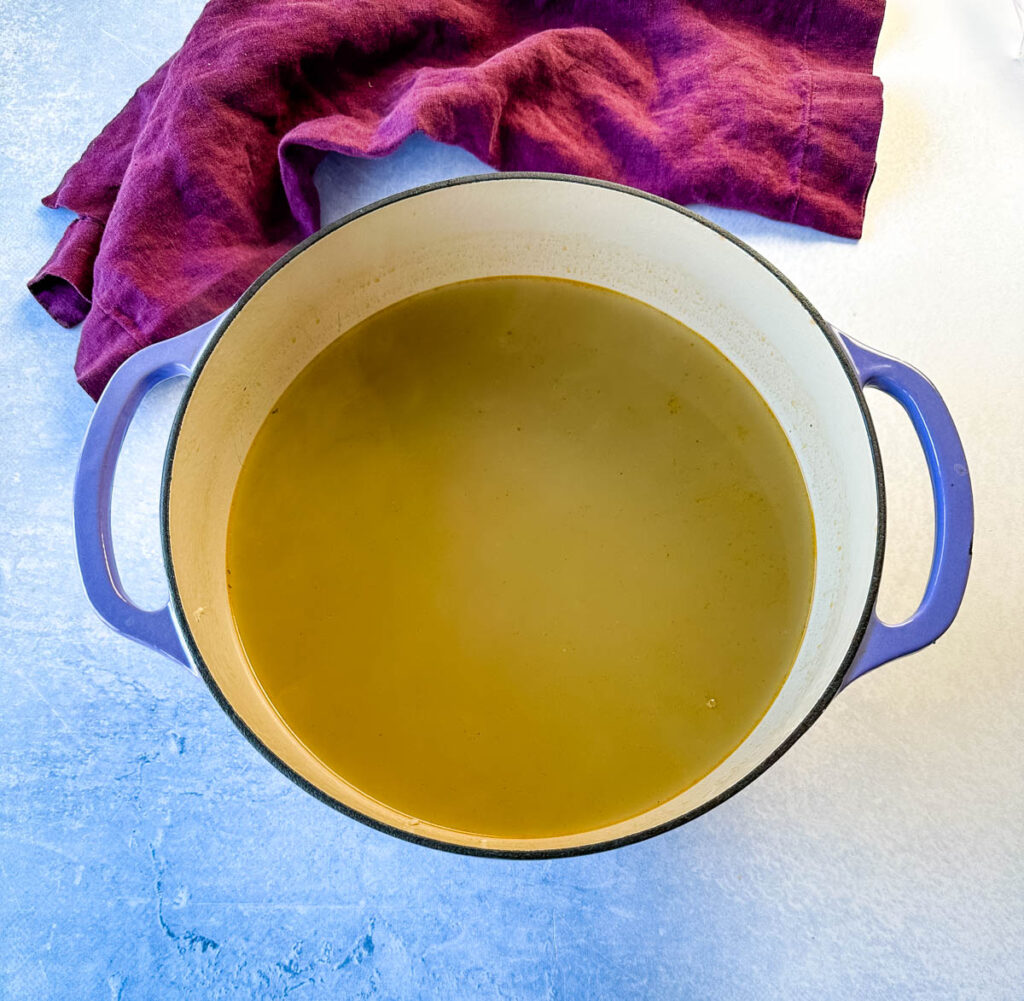
How to Store
The stock will last for a week tightly covered in the fridge.
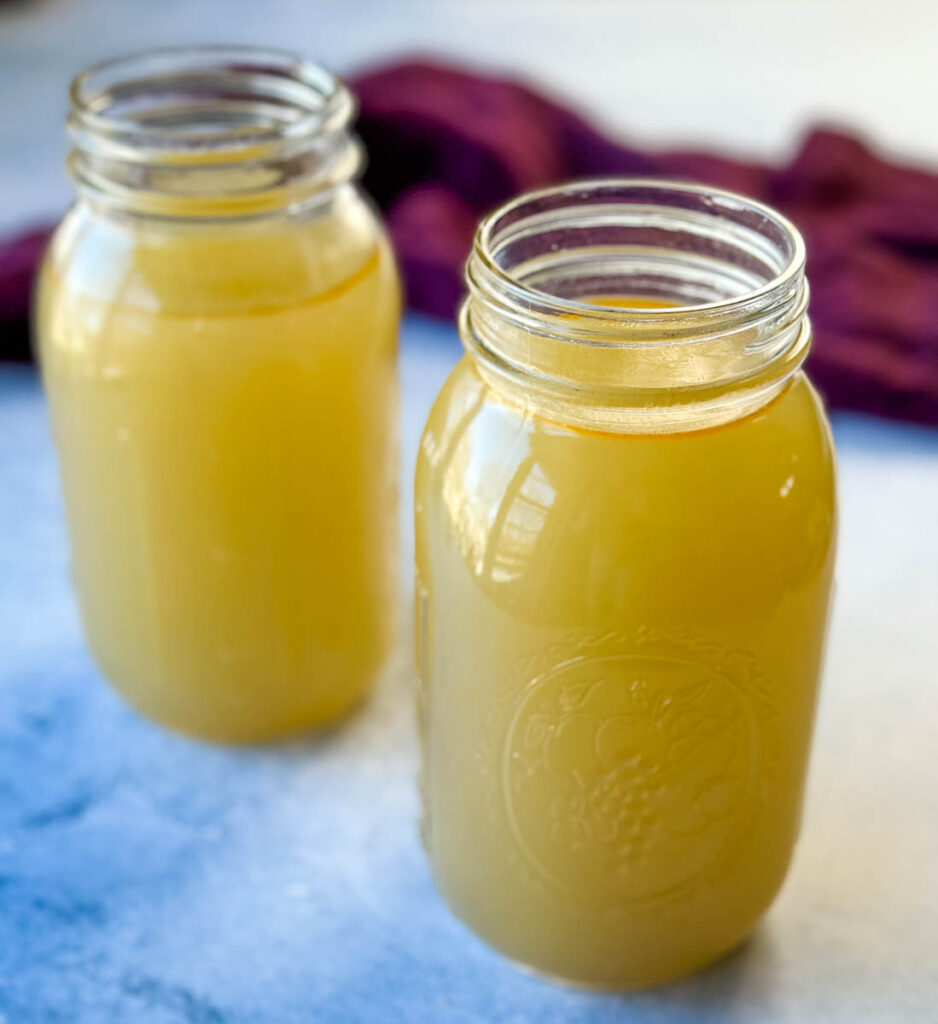
Pair With These Recipes
Creamy Crab Bisque
Crab Risotto
More Seafood Recipes
Seafood Boil in a Bag
Grilled King Crab Legs
Grilled Snow Crab Legs
Smoked Lobster Tail
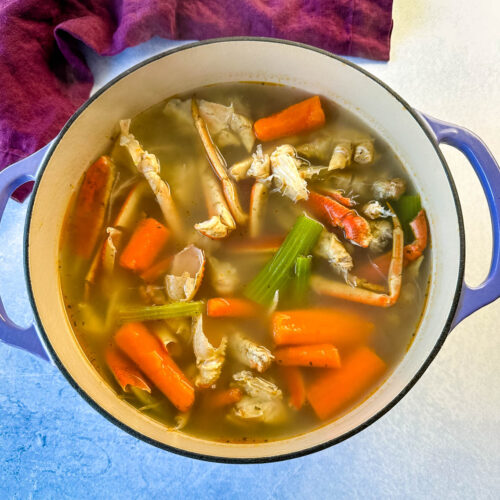
Seafood stock
Ingredients
- 1-3 pounds seafood shells Crab, lobster, shrimp.
- 2 bay leaves
- 2 celery stalks Chopped into pieces.
- 3 carrots Chopped into pieces.
- 1/4 cup dry white wine I used Pinot Grigio.
- salt and pepper to taste
- water Use enough water to completely cover the shells and vegetables.
Instructions
- Add all of the ingredients to a Dutch oven or soup pot on High heat. Be sure to use enough water to cover all of the ingredients. As the broth heats you may notice bubbles/scum. You can spoon that out with a spoon or ladle.
- Once the water begins to boil, adjust the heat to medium-low and cover. Allow the broth to simmer for at least 25 minutes. Taste the broth repeatedly. Add additional cooking time if the broth does not have immense flavor. The number of shells you use and the type of shells you use will impact the cooking time. You may need to allow the broth to cook for an hour or longer.
- When the broth is finished, strain the broth using a mesh strainer or cheesecloth.

KfnqDuxw
Wednesday 14th of May 2025
1